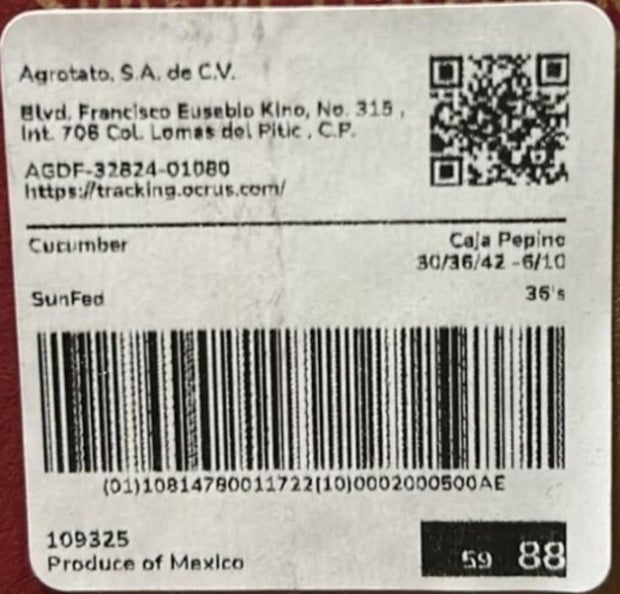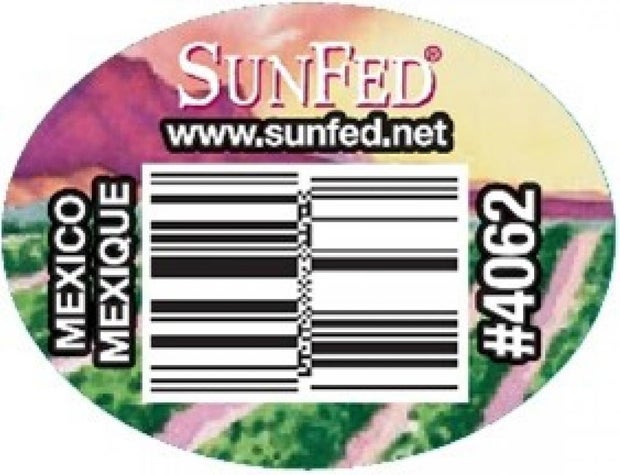CBS News
Canada weighing how to retaliate if Trump imposes 25% tariffs

Experts say a volley of tariffs between the U.S. and Canada could tip both countries into a recession and severely disrupt cross-border commerce between the key trading partners.
A Canadian government official said Wednesday it is exploring potential retaliatory levies on certain U.S. imports after President-elect Donald Trump on Monday threatened to impose a 25% tariff on all goods from Canada and Mexico on his first day in office. The official, who stressed no final decision has been taken, spoke on condition of anonymity as they were not authorized to speak publicly.
Mexican President Claudia Sheinbaum earlier this week also hinted that the country could retaliate against the U.S. with its own tariffs on American products. Trump said the stepped-up duties are necessary to curb the flow of undocumented immigrants and illicit drugs from Mexico and Canada.
“Blanket 25% tariffs on Canada threatened by U.S. President-elect Donald Trump earlier this week would push Canada into a recession in 2025, cause a sharp spike in inflation and force the Bank of Canada to hold rates higher next year,” economist Michael Davenport of Oxford Economics said in a report Thursday.
Inflation in Canada would top 7% by mid-2025, while unemployment would approach 8% by year-end, according to the investment research firm. The country’s auto, energy and heavy manufacturing industries, which rely on exports to the U.S., would take the biggest hit, he added, noting that the sectors also depend on components from American suppliers.
Canada fired back with duties of its own when Trump slapped tariffs on the country’s steel and aluminum exports to the U.S. during his first stint in the White House. Canada targeted U.S. products including whiskey and yogurt, most of which came from one plant in Wisconsin, home state of then-House Speaker Paul Ryan.
Canadian officials say lumping Canada in with Mexico is unfair but say they are ready to make new investments in border security and work with the Trump administration to lower the numbers from Canada. The Canadians are also worried about an influx of migrants if Trump follows through with his plan for mass deportations.
U.S. also would feel the pain
Trump and his allies, including his choice for Treasury Secretary, Scott Bessent, have argued that tariffs deployed during his first term advanced U.S. economic aims and didn’t boost inflation.
But the U.S. likely wouldn’t go unscathed in a full-blown trade war with Canada. Across-the-board tariffs on American products would likely cause a “shallow” recession in the U.S. and fracture political relations between the allies, according to Oxford.
Although the U.S. is the world’s leading oil producer, Canada supplies roughly 20% of the oil used stateside. As a result, U.S. gas prices could shoot up 30 to 40 cents a gallon, and potentially up to 70 cents, soon after Trump levied the tariffs on Canada, Patrick De Haan, head of petroleum analysis at GasBuddy, told CBS MoneyWatch.
With so much on the line, the incoming Trump administration is more likely to impose limited tariffs on Canadian products, such as steel, lumber and farm products like dairy.
“Despite Trump’s latest threat of blanket tariffs, we still think it’s unlikely that the Trump administration will put tariffs on Canadian autos and energy exports, which make up about 40% of total Canadian exports to the U.S.,” Davenport said. “The North American energy sector and auto supply chains are highly integrated across the U.S.-Canada border and any tariffs on these goods would also have a significant negative effect on the US economy.”
contributed to this report.
CBS News
Cucumbers recalled across U.S. and Canada over possible salmonella contamination

An Arizona produce company is recalling whole cucumbers distributed in 26 states and Canada because they could contain salmonella.
In a filing posted by the Food and Drug Administration on Thursday, SunFed said the recalled cucumbers were sold between Oct. 12 and Nov. 26 and are being pulled from store shelves over possible contamination by the bacteria. Salmonella can cause fatal infections in young children, elderly people or other individuals with weakened immune systems.
The recall applies to all sizes of SunFed whole, fresh cucumbers. The produce came packaged in bulk cardboard containers with a “SunFed” label, or could also have been displayed in a generic white box or black plastic grate. A sticker on such containers would indicate the cucumbers’ grower’s name, the company said.
The produce was shipped to customers in the following states: Alaska, Arizona, Arkansas, California, Colorado, Connecticut, Florida, Idaho, Illinois, Indiana, Kansas, Maryland, Massachusetts, Minnesota, Missouri, New Jersey, New York, North Carolina, Oklahoma, Pennsylvania, Tennessee, Texas, Utah, Virginia, Washington and Wisconsin. Some of the recalled cucumbers also could have ended up at retail outlets beyond those states.
The cucumbers were also sold in the Canadian provinces of Alberta, British Columbia, Calgary, Ontario and Saskatchewan.
SunFed
SunFed
Consumer are urged to check their own produce against images of the potentially affected products and to refrain from consuming or distributing suspect cucumbers. Recalled products should be destroyed, SunFed said.
“As soon as we learned of this issue, we immediately acted to protect consumers. We are working closely with authorities and the implicated ranch to determine the possible cause,” SunFed President Craig Slate said in a statement.
Consumers who may have bought the recalled products or who have questions can contact SunFed’s recall hotline at (888) 542-5849, Monday through Friday from 8 a.m. to 5 p.m. Mountain Time.
Earlier this year, an outbreak of salmonella linked to recalled cucumbers from two Florida growers sickened at least 449 people in 31 states and the District of Columbia.
Salmonella bacteria cause about 1.3 million infections, 26,500 hospitalizations and 420 deaths in the U.S. every year, with food being the source for most of the illnesses, according to the Centers for Disease Control and Prevention.
CBS News
Connecticut Democratic lawmakers report bomb threats on Thanksgiving

Three Democratic lawmakers from Connecticut on Thursday reported bomb threats, one day after members of key senior staff picks of President-elect Donald Trump’s reported they were targeted by threats and “swatting.”
Sen. Chris Murphy, Rep John Larson and Rep. Jim Himes — all Democrats — issued statements on Thursday that their homes were subject to bomb threats. Murphy’s office said the threats appeared to be “part of a coordinated effort involving multiple members of Congress and public figures.”
Trump transition spokeswoman Karoline Leavitt said in a statement on Wednesday that several of Trump’s planned nominees had been targeted with swatting or bomb threats.
Reps. Elise Stefanik and Lee Zeldin, tapped to be U.N. ambassador and EPA administrator respectively, both said they were targeted, and the NYPD responded to a threat at the home of Howard Lutnick, tapped to be Commerce Secretary. Susie Wiles, Trump’s incoming chief of staff, and Pam Bondi, the former Florida attorney general whom Trump has chosen to be the next U.S. attorney general, were targeted in this wave of attacks, according to a senior law enforcement official.
Former Rep. Matt Gaetz, Trump’s original pick to be Attorney General who later withdrew his name from consideration, also reported being targeted.
“Swatting” is the action of falsely calling emergency services in an effort to send armed police officers to a specific address or target in a threatening way. Bomb threats can represent a form of swatting — misleading authorities to believe that a serious threat or crime is underway to prompt an urgent response from police. And in rare cases, they’ve led to fatal outcomes.
The Department of Homeland Security warns that the criminal trend — a “daily occurrence” that often occurs in clusters — wastes police and first responder resources, plus can lead to dangerous altercations between law enforcement officers. Mark Herring of Tennessee suffered a fatal heart attack in 2021 after he was targeted, while a Kansas man was shot dead by police in 2017 who responded to his home.
Though swatting may lead to felony charges and can be punishable by years behind bars, suspects are often tricky to track. Offenders routinely employ caller ID spoofing, social engineering tactics, voice masking technology, and even tactics teletypewriter (TTY) technology (a phone system designed for people who have hearing or speech impairments) to mask their identity or pose as a victim.
CBS News
This is how retailers get you to spend more money

As shoppers gear up for Black Friday and the holiday shopping season, it can be easy for people to rack up debt that will weigh them down well into the new year. So it pays for consumers to be aware of some of the tactics retailers employ to get them to spend.
For example, most offers that dangle savings in the form of free shipping or a free gift if you spend over a certain amount don’t save you money. The practice, called “spaving,” or spending more in order to save, rarely benefits consumers, according to personal finance experts.
“I understand the appeal of getting to checkout and a notification pops up saying spend $10 more to get some perk,” LendingTree senior economist Jacob Channel told CBS MoneyWatch. “But 90% of the time when you break it down, it doesn’t make sense. You’re not actually saving money if you are spending more of it.”
Here are five tactics retailers use to get you to spend more, according to the U.S. Public Interest Research Group (PIRG), a consumer advocacy group.
Creating a false sense of urgency
The fear of missing out on a good deal can nudge consumers into making impulse buys. Although some offers really are only valid for a limited time, U.S. PIRG identified a number of sellers on Etsy, an e-commerce site for independent craftspeople, who used fake countdown clocks for deals that never expire.
Of 20 top-selling products on the site with countdown timers on deals, 80% of them simply reset when their tickers tickers hit “0,” according to a PIRG study.
“The ‘limited’ time window may not be as limited as it sounds and the deals not as good as they seem,” U.S. PIRG’s R.J. Cross told CBS MoneyWatch. “Make your list, comparison shop on those items, and don’t get distracted by offers you haven’t had the time to think through.”
Implying scarcity
Online retailers may label products as “selling fast!” or, as a consumer is considering a purchase, display how many other consumers are browsing the same item.
“Retailers and advertisers are always trying to get you to buy more than you need and spend more than you want,” Cross said in a statement. “Once you know what to look for, you end up chuckling when you see these tactics instead of falling for them.”
Pricing tricks
Ever wonder why a price reads $4.99 and not simply $5? When sellers round an item’s price down, it suggests to a shopper that it is cheaper, PIRG notes. Although $4.99 is only a penny less than $5, a shopper is more likely to fixate on the dollar figure — $4 — versus the cents.
Even removing a comma from a high sticker price like $1,200 and displaying it as $1200 can entice someone to pull the trigger, according to PIRG. Meanwhile, breaking the cost of an item down into monthly installments can also make the price seem smaller than it really is, the organization noted.
“You’re still going to have to pay the full cost, and sometimes even more in late fees, if you’re not careful,” Cross pointed out.
Dubious testimonials
Many retailers feature online testimonials ostensibly from customers raving about a “life-changing” vacuum cleaner or pair of sweatpants. Some of these account are from real customers, while other reviews cannot be trusted because they have been generated by a bot or the company itself, PIRG said.
At bottom, it’s a form of peer pressure — shoppers are subtly induced to think that buying the product will make them as happy as the satisfied customers depicted in the testimonial. In reality, many online reviews are fake, especially as AI bots proliferate.
“When you look at reviews on a product, don’t necessarily take the star ratings for granted. Better to look through the comments and find those that seem real — that either include a picture of the product or that make a point specific to the product instead of a generic note like ‘great product!'” Cross recommends.
Appeals based on fear
Many marketing pitches and ads suggest that your life will somehow be worse if you don’t make a purchase, from being at risk of a home invasion to hair loss. With e-commerce, of course, such messages are tailored to your individual interests and tastes given that website cookies track share your browsing patterns with retailers.
Messages “about how to fix our perceived flaws only become more capable of finding us at all hours of the day whenever we go online,” Cross said.









